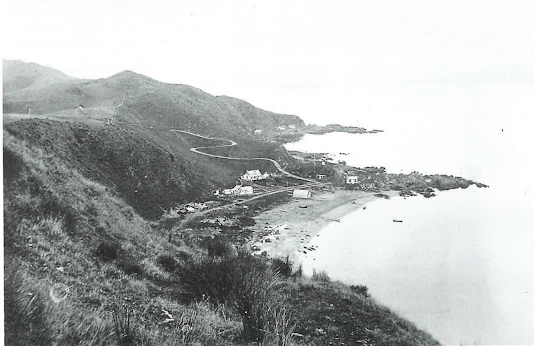We’ve tracked the history of Our Place from its earliest discovery by Māori, through its past as a pā site and kāinga, and also as part of a farm. This week, our Inquiry arrived at the most recent 125 years. With more families making Worser Bay their homes, it was decided in 1897 that a school should be created. Our school began life in the church hall on what is now Marine Parade, moving up the hill to its current site a year later.

The first intake of children was just 16, with one, industrious female teacher. This made the whole of school quite a lot smaller than Autahi is now. The original school building started off with just two rooms, but more were added as the school grew. By November 1902, the roll had reached 77. It's interesting to note that, when the role reached 80, the school board decided that a married, male principal was required.

The original school building (pictured above) was still in use until 1979, when it was demolished and rebuilt to the current 'child-friendly' (and award-winning) design.
Throughout this Inquiry, we've been trying to keep in mind the role of evidence. How do we know what we think we know? Where does our information come from and what form does it take? Our evidence has included legends, photos, newspaper reports and other written accounts as well as exploring our physical environment.
This week, we've been able to make use of the archive of photos and written memories that we hold at school. Looking at the photos has been particularly rewarding. Could we recognise our school and the places we know? What are the children and teachers wearing? What's the same - and what's different?

We have also welcomed a past Worser Bay student to share his memories - another form of evidence. Jack, our visitor, was at Worser Bay 20 years ago and was here for the school's 100th anniversary.
Autahi and Tautoru teamed up, in small groups, to chat with Jack. We had plenty of questions for him about what the school looked like, what games he played, his teachers, his lunch ... Luckily, Jack was happy to answer them all. Here are some cool tidbits that we learnt from our interviews with Jack.
There were no veggie gardens or outdoor classroom in Jack's day, and the fences were less tall, which made them easier to climb over! There was a wormery, though. "We played outside a lot. We played football (but there was no Discovery Time)... We had rain bells and if it rained, we were herded inside. We were a bit crazy at wet playtime [because there weren't any toys to play with]."
Some people wanted to know if there was a school pet. "There were no pets but a couple of the neighbourhood cats used to come by." This sounds familiar!
Back court was a swimming pool! "The pool was very cold. We went in twice a week in Summer. It didn't have a roof and felt as cold as an iceberg. The pool was filled up with a hose."
Bottom court looked a lot the same. "There was no rock climbing wall. People brought in ramps to skateboard on - but they weren't supposed to!"
Big Kids' and Little Kids' Playgrounds were pretty much the same, too. "Stuff looked older - there's more painted stuff now. It's had a paint job."
Jack was impressed that some of our Junior students can do the monkey bars in Big Kids' playground. "We weren't allowed in Big Kids' Playground until you were in year 4." Jack remembered the fig trees very well - and playing games with the figs. "Our teachers hated it when we threw figs!"
Jack remembered sitting on the mat in Tautoru. At the time, Autahi wasn't a classroom so Tautoru was home to years 1 and 2 together and years 3 and 4. "Our Principal was called Murray. He had a big beard and was the best recorder player. He taught us all the recorder."
Our current crop of Road Patrollers will be interested to know that, "After Road Patrol, in the Winter, you got hot chocolate."
And those questions about lunch? "I didn't have chocolate milk in my lunch, no. I used to have an apple because I didn't like bananas. I think I had two blue lunch boxes and a red one. I often broke them by falling over with them in my bag, which made my Mum cross!"
We hope that Jack enjoyed walking down memory lane with us. We're very grateful for his time and the way he generously shared his memories of our school. It's so fascinating to reflect on what is different - and also, how much hasn't changed at all.






.jpeg)
.jpeg)
.jpeg)
.jpeg)
.jpeg)
.jpeg)
.jpeg)
.jpeg)
.jpeg)
.jpeg)
.jpeg)























.jpeg)
.jpeg)
.jpeg)
.jpeg)




